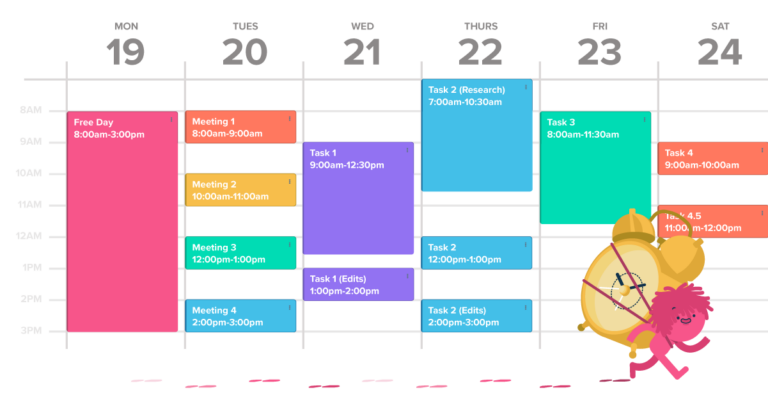Speaking of That Mindful Eating Guide
Have you ever gone to an all-you-can-eat buffet? Boy, oh boy, isn’t that the place where we all forget ourselves and end up having to be rolled out because we can’t walk? I know I’ve done it and wouldn’t mind doing it again, although not too soon. There are times when people forget to listen to their hunger cues – parties, social gatherings (drinking involved), boredom, sadness – it’s all normal and human. Food is a huge part of our lives, but sometimes we pick up less-than-ideal eating habits along the way or more sinister eating disorders.
Mindful eating can be a way of rectifying some of these problems. Mindful eating stems from the broader philosophy of mindfulness – the art of being in the moment. Eating mindfully spreads across several different spheres and engages with the overall effect food has: from pleasure to physical fullness. When you take your time to be in touch with your body and mind while nomming away, you focus on all sensations: flavour, texture, smell, and how it makes you feel, all so that you can have a more enjoyable experience.
How to Practise Mindful Eating
Let me get this straight: Mindful eating is not a dieting scheme. It’s not an excuse to restrict calories or set unreasonable goals about your physical appearance or weight. Mindful eating is about listening to your body and getting rid of various limiting beliefs about ‘good’, ‘bad’, or otherwise labelled foods. Food has no moral positioning; it’s not good or bad – it just is. Some food is more nutrient-dense than others, but neither deserves to be ignored.
Mindful eating stands for a type of food freedom that means ditching all dieting mentality. Now, I know I rant about social media a lot, but unfortunately, it is true – it promotes unhealthy relationships with food more often than not. People post their’ what I eat in a day’ reels followed by them flexing in a complimentary light, and the audience is inculcated with the idea that if they ate the same, they would look the same. Here’s a secret: we could all eat the same and exercise in the same way, and we would still look different and carry our weight differently. But influencers don’t tell you that: they promise you quick and easy success if you follow their buzzword-filled recipes. As a result, people find themselves restricting, purging, and bingeing, and before they even know it, their relationship with food is full of goods and bads.
Mindful eating does away with that (just like mindfulness generally does away with extremes). It brings freedom to eat a cookie when you want one but also to stop when you’re full. It teaches you to listen to your body when it demands more nutritious food but also to know when to respond to cravings. So, let’s learn to listen.
8 Steps to Mindful Eating
Before we go down the path towards mindful eating, I invite you to partake in this small exercise. Grab a few raisins or any other fruit. Take your time to really look at it, smell it, and feel it in your hands before popping it into your mouth. Now, feel the texture, the flavour, the perfect chewy touch. Nom! Mindful eating will look kinda like that, but it will include additional steps and planning.
- Plan your shopping. Mindfulness is not a rushed enterprise. Quite the opposite because it requires your time and thoughts, and this starts with your shopping list. Plan your meals for the following days and fill your shopping cart with fresh produce (ideally locally sourced), fruits and veggies, healthy fibre sources, and complex carbs. When you find yourself in the dessert area, think about what you really want – don’t just grab five different brands of biscuits with peanut butter cups to boot. You can also meal-prep for the entire week.
- Eat when you’re hungry, not when you’re starving. This means you ought to plan your day too. You cannot work for hours on end without breaks, and you certainly shouldn’t work through your lunch break (what would the Swedes say!?). Skipping meals is bound to set you up for failure because a starved body does not react quickly enough to fullness cues. Additionally, when you’re ravenous, you’re more likely to just stuff your face with the first thing you see, and this may not be the most nutrient-dense way to go. If you don’t have that much time to cook, you can make a list of quick and easy recipes.
- Start with smaller portions. NOT restrictive! But we are programmed to eat everything on our plates (thanks grandma!), so if you are not sure how hungry you are, better start small. On that matter, always eat from a plate rather than the pot/pan directly, and sit down for your meals.
- Appreciate your food. Take this chance to practise gratitude for the lush meal in front of you. Appreciate how healthy food benefits you as it fuels your body, lets you concentrate better, and gets you through your day.
- Activate all your senses and deactivate distractions. Look, smell, taste, feel! Allow yourself to be enchanted by your own creation and enjoy every bite. Ditch your phone or TV while eating to focus on what your stomach is saying rather than your screen.
- Take small bites. No point in choking on your own food.
- Chew thoroughly. If you take time to chew and enjoy every bite, your stomach will waste no time alerting you that you are full. Additionally, well-chewed food is easier to digest, making the energy you get from it more readily available. Read: fewer post-meal slumps!
- Eat slowly. Seriously, it helps with bloating and gives you time to recognise you’re full.
Next time you sit down for a meal, actively introduce and follow these eight steps. It might take some time to get used to eating mindfully, but in the long run, it’ll greatly benefit your overall health and satisfaction.

Mindful eating has many benefits, including helping you recognise when you are truly hungry!
Benefits of Mindful Eating
Apart from taking great pleasure from delicious, fragrant food, mindful eating offers numerous health benefits:
- Improved digestion. When you really listen to your body, you know which foods to choose to promote the most effective digestion. For example, if you’re experiencing piercing stomachaches after eating spicy food, maybe you need to scale down on your Taco Tuesdays.
- It helps recognise true hunger. How often have you sat in front of the TV and, after a few moments, decided you needed a whole snack plate to boost the experience? I stopped buying popcorn in cinemas when I realised I wolfed down the whole bucket before the commercials were done. Mindful eating helps you recognise your hunger cues.
- It teaches you how to make healthier food choices. When you think about what nutrients each piece of food gives your body, you learn to go for healthier food options. As I said, it’s not about ditching less nutritious foods, but if you want to fuel your body, you’ll want to honour it with healthy choices.
- Mindful eating regulates cravings. When the wee hours strike and you start craving chocolate out of habit, practising mindfulness around food may help you curb the craving. BUT! Remember, cravings are short-termed, and if they don’t subside in 10-15 minutes, your body is REALLY telling you something, and you need to listen!
- It stops hedonic eating. Mindful eating puts paid to eating solely to produce good brain chemicals and using food to cope with emotions (e.g. stress-eating).
- It can, yes, help with weight loss. I raise this one tentatively. Life should not be all about losing weight. Chances are that mindful eating can help you regulate weight because it usually means less mindless snacking, but you should NEVER use it as a dieting strategy. In fact, you should not use ANY dieting strategy unless specifically recommended by your doctor in order to improve your health.
- Mindful eating can heal from binge eating. Binge eating disorder is a serious issue and is more common than we are led to believe. Eating mindfully can be used as a healing strategy.
How to Change Eating Habits with Mindful Eating – If You Catch Yourself Bingeing …
As I mentioned, disordered eating is on the rise. The fact is that various beauty standards have always surrounded us, but the last couple of decades have been particularly cruel to us all. For example, men are expected to be ripped with less than 2% body fat (otherwise, where abs!?). Seeing all these Marvel eye-candies parade around shirtless doesn’t help either. Women, on the other hand, have it even worse. In the 2000s it was all about being as tall and as thin as possible, and a mere ten years later, tiny waists and big booties are all anyone is talking about.
Magazines, television, commercials, and social media have created an image of an ideal body, which for pretty much anyone who cannot afford multiple plastic surgeries, is unattainable. So, people diet. And diet some more. And suddenly find themselves eating a whole package of Oreos in the middle of the night because their bodies are way past asking nicely for food, going straight into taking action without consulting the brain. And then some more dieting. Hmm, and then what? Then the binge-restrictive cycle begins.
There are many types of eating disorders and disordered eating. If you suspect that you may be suffering from any, please seek help as soon as you can. With that said, I’ll just address the binge-restrict cycle regarding mindful eating here.
Eat Binge-Restrict Cycle Away
Disclaimer: Binge eating disorder is a mental illness as much as physical and is triggered by a hormonal imbalance between leptin and ghrelin – hormones that send hunger and fullness cues. If you find yourself binging regularly, talk to your doctor ASAP!
Binge-restrict cycle works a bit differently and can be improved with mindful eating. The vicious cycle is triggered in two ways:
- Eating too much on one occasion and believing you need to restrict to make up for it, for fear of gaining weight. Restriction leads to a binge-eating episode, and the cycle continues.
- The desire to lose weight initiates restriction, which results in bingeing as the body fights back, instigating another round of restriction.
The problem in either equation is not binge-eating; it’s restriction. In order to avoid or break the cycle, you can employ mindful eating practices. The most important thing is to listen to your body and eat when you’re hungry. It doesn’t matter what time it is or whether you’ve eaten recently; if you’re hungry, eat.
Restriction is not just physical; it’s also mental. Cutting out certain food groups and setting goals like ‘no chocolate or ice cream’ sets you up for failure instantly. If we are to go back to when Eve took the apple, humans have always craved forbidden fruit – or forbidden chocolate, for that matter. As soon as you restrict for a few days, you’ll find yourself inhaling tons of chocolate and feeling ashamed about it or otherwise discouraged. So, why not skip this entire step. Listen to your body and eat chocolate when you need it. If you don’t restrict, you’ll find it easy to have a few pieces and stop.
PS There will be times when you need more chocolate (because roughly 50% of the population is condemned to PMS), which is totally fine!
Your Mindful Eating Recipe for Life
To quickly recap: Mindful eating is about listening to your body regarding food. It’s eating when hungry, responding to cravings, and picking nutrient-dense foods in order to provide yourself with the best possible fuel for the day. Sometimes the type of fuel will vary, but it’s all part of the process.
Mindful eating is great for combating mindless snacking, overeating out of boredom, using food as a coping mechanism, or even drowning in the binge-restrict cycle. Some ways to incorporate mindfulness in your eating include:
- Activating all your senses when eating.
- Eating slowly and chewing thoroughly.
- Planning and prepping your meals.
- Avoiding distractions when eating.
- Ditching diets and quick fixes.
Don’t forget to eat today. Bon Appetit!







